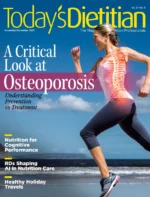It’s a phenomenon that’s pervasive on social media platforms, in TV shows, in advertisements and the movies—and even in clinicians’ offices. Today’s Dietitian explains what this is, what’s driving it, and ways RDs can help stop it.
Feature
Today’s Dietitian explores the diverse, flavorful foods of this Mediterranean country. From biber salcasi and pişi to menemen and pogaca, the traditional foods and confections of Turkey comprise unique savory flavors and healthful ingredients not to be forgotten.
This continuing education course reviews nutrition interventions for common IRDs. Pharmacological and physical/occupational therapies also are addressed, as well as counseling strategies for clinicians.
Mention the Med diet and thoughts of Italy or Greece may come to mind. But many of the food staples, spices, and flavorful dishes originated in the northern region of the Motherland. Find out more so you can better counsel clients.
Discover how nutritious and sustainable blue foods are and the certifications that can help clients choose safe, healthful options.
The effects of polycystic ovary syndrome can be felt over a lifetime. Learn the origins of PCOS, how it may present in adolescence and postmenopause, and the role the gut microbiota plays in its development.
Learn what the latest protocols are for identifying and communicating express vs implied claims and how guidance is aimed to correct misunderstandings of scientific evidence in media ads.
With increased use of cannabis, it’s important for RDs to understand the relationship between the gut microbiome and the endocannabinoid system, and the role cannabis may play in the functioning of the human body.
This continuing education course examines the most recent dietary guidelines for Americans. From dietary recommendations for children aged 0-24 months to recommendations for pregnant and lactating women, there are several details RDs will want to explore to better assist clients.
Through evidence-based nutrition interventions, explore how RDs can help treat bone and soft tissue injuries and prevent them in the future.


